2019 Toyota Prius and Prius AWD Review

The Toyota Prius has been the front-runner in the hybrid space for decades now, but faced with increased competition, it was time for this popular car to learn a new party trick.
That new party trick is the availability of all-wheel drive, which helps set it apart from the Honda Insight, Hyundai Ioniq, and Kia Niro as the only car in its class that offers four-wheel traction. Toyota predicts that 25 percent of Prius buyers will opt for the all-wheel drive, and it will be a huge benefit to anyone who has snow and bad weather to deal with. Combined with refreshed looks, new packaging and some improved features for the 2019 model year, the Toyota Prius brings a lot to the table.
ALSO SEE: 2019 Honda Insight Review
How Does It Work?
The Prius is now available with an AWD-e system (the e is for electric). An electric magnet-less motor drives the rear wheels, but only under certain conditions. From zero to 6 mph, the rear axle will always be driven regardless of conditions for stronger and more confident launches, and at speeds at up to 43 mph if wheel slippage is detected. When slippage is not detected and at speeds over 43 mph, the electric motor is essentially disconnected and the Prius continues to operate as a front-wheel-drive car.
This part-time setup ensures more traction is available when drivers need it but also keeps the Prius’ main goal of maximum MPGs front and center. The whole system is fully automatic so drivers just have to sit back and let the car do the work. There is also a display on the center-mounted gauge cluster that shows you where the power is going.
Driving Dynamics
In practice, the AWD-e system is essentially invisible and under normal circumstances, you can’t even tell it’s working unless you’re looking at the display that shows you what wheels are being driven. The driving dynamics are essentially the exact same as the front-drive model, so it’s quiet, smooth, comfortable, and unobtrusive. The steering is light, the turning circle is tight, and the acceleration isn’t thrilling, but it does the job. The brakes also feel natural to use, and it’s nice that the regenerative braking doesn’t feel too grabby or digital.
ALSO SEE: Top 5 Best AWD Hatchbacks: 2019
The AWD-e model also has 0.2 inches of extra ground clearance, which barely makes a difference. What did make a slightly noticeable difference is the extra pulling power the electric rear motor gives the Prius AWD-e, adding an extra 7.1 hp and 40.6 lb-ft of torque to the mix, which includes a 1.8L gas four-cylinder engine (95 hp/105 lb-ft) and two motor/generators (71 hp/120 lb-ft). You can feel an extra boost from the AWD-e system for a split second after a hard launch from a stop, but it quickly fades away. The AWD-e system does not split torque left to right, but does use brake-based traction control to help if slippage is detected under one of the rear wheels.
Toyota set up a snow hill with a 6 percent grade on it and the Prius AWD-e was able to climb it very easily, though slowly, even without dedicated snow tires. It was interesting to see and hear the system sorting itself out and it definitely felt confident climbing up the hill. There was barely any wheel slippage and you can feel the Prius AWD-e pushing you up the hill.
ALSO SEE: Toyota Wants to Add TRD and AWD Models Across the Lineup
Driving on a snowy curve, the front-drive model felt weirdly more predictable, maybe because I knew what it was doing at all times. This might because the AWD-e system takes a beat to figure itself out, but it sorts everything out quickly and works as intended to keep the Prius tracking on its intended line.
Although it is anywhere from 145 to 170 lbs heavier than the FWD Prius depending on which trim you get, the Prius AWD-e is rated to get 52 mpg city, 48 mpg highway, 50 mpg combined, a small 2 mpg combined increase over the front-drive Prius.
Other Differences
The Prius AWD-e gets a beefier nickel-metal hydride battery that is designed to work better in fluctuating temperatures and the cold, which makes a lot of sense because it’s people who have cold and snowy winters who would find the AWD more useful. The platform also allows the battery to be positioned under the rear seat so it doesn’t impact cargo capacity, which is rated at 27.4 cu-ft to a max of 62.7 cu-ft for the AWD model.
The regular front-drive Prius continues to have a lithium-ion battery. Other than that, the Prius AWD gets new fog lamps and a new LED accent light. Otherwise, the FWD and AWD Prius will look the same, minus the AWD-e badge on the back.
New Features for 2019
The whole Prius lineup gets refreshed looks that really tone down how ugly it was. If you were scared away by the alien angles of the former Prius, this new one has a look that is much easier to digest both in front and in the back. The biggest differences are more traditional headlights and tail lights.
ALSO SEE: Hyundai Ioniq Hybrid Review
Inside, there are useful and functional changes. The white porcelain-looking trim in the center console and housing the gear shifter and cupholders is gone in favor of piano black, the available Qi wireless charging pad is now bigger to fit larger phones, and there are two new fast-charge USB ports in the back. Models without heated seats get a useful slot you can stand a phone up in, which is a great solution instead of simply offering dead buttons. (Heated seats will be standard in Canada.)
Top trim Limited Prius models get a huge tablet-like touchscreen that is great at hiding fingerprints, though it gets docked marks because it doesn’t have a volume knob (but the standard touchscreen in lower trim cars have one). Although Toyota’s infotainment system still isn’t great, the big screen looks pretty and is quite responsive, even if it’s not the most user-friendly. Unfortunately, the Prius still doesn’t have Apple CarPlay and Android Auto, though Toyota promises CarPlay is coming soon to the Prius.
Pricing and Strange Packaging
The Prius now has four trim grades: L Eco, LE, XLE, and Limited, named more in line with the rest of the Toyota family. The AWD-e system will only be available on LE and XLE models, which means you can’t get AWD if you wanted the big, tablet-like touchscreen (unless you’re in Canada, where you can get AWD and the big screen). It seems like a missed opportunity not to offer a trim that gives drivers the best of what everything Prius has to offer.
Pricing for the Prius L Eco starts at $23,770, the LE goes for $24,980, the XLE for $27,820, and the Limited for $32,200. Adding AWD-e to the LE is an additional $1,400, while it’s an extra $1,000 on the XLE. I’m also surprised that Toyota didn’t outfit the Prius AWD-e with better all-season tires instead of the eco tires available on all other Prius models. Considering those who drive in real snow should always have dedicated winter tires even if they have AWD, having winter-rated all seasons might have made it an even stronger value play.
ALSO SEE: Buyer’s Guide: The 10 Best Fuel-Efficient Tires and Low Rolling Resistance Tires
What helps is the inclusion of Toyota Safety Sense P, the brand’s package of driver assistance and safety tech. The standard safety equipment includes the pre-collision system with pedestrian detection, lane departure warning with steering assist, automatic high beams, and adaptive cruise control that works at all speeds.
{"attachment_id":"748160"}
The Verdict: 2019 Toyota Prius and Prius AWD Review
The Prius is a much more compelling car than it used to be and the fact that it looks so much better now is a huge bonus that I think won’t scare so many people away from hybrid ownership. The available AWD system will undoubtedly offer the confidence that drivers in the winter want, and all at a reasonable price with a negligible impact on the stellar fuel economy or practicality that made the Prius so popular to begin with.
Discuss this article on our Toyota Prius Forum
LOVE IT
- AWD gives it a competitive edge
- Looks much better now
- AWD works pretty seamlessly
- MPGs still great
LEAVE IT
- Can't get AWD with big touchscreen (Unless you're in Canada)
- No Apple CarPlay/Android Auto

Jodi has been obsessed with cars since she was little and has been an automotive journalist for the past 12 years. She has a Bachelor of Journalism from Ryerson University in Toronto, is a member of the Automobile Journalists Association of Canada (AJAC), and a jury member for the prestigious North American Car/Truck/Utility Vehicle of the Year (NACTOY). Besides hosting videos, and writing news, reviews and features, Jodi is the Editor-in-Chief of AutoGuide.com and takes care of the site's day-to-day operations.
More by Jodi Lai



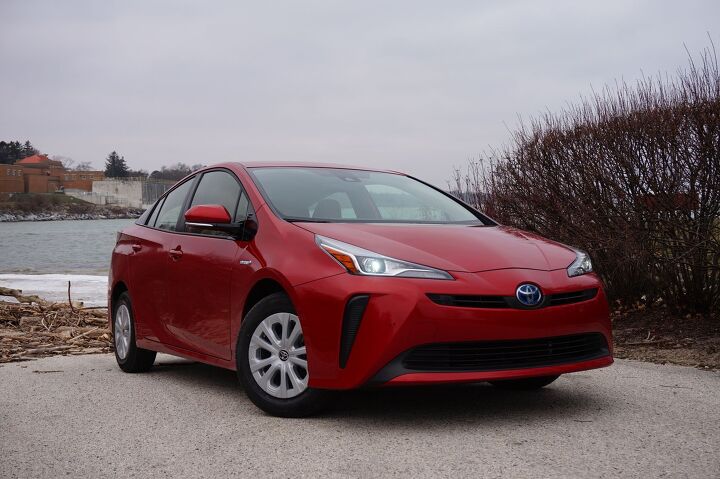
























































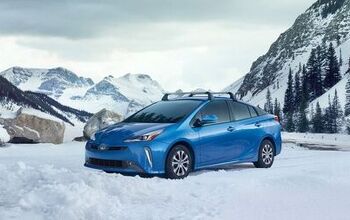

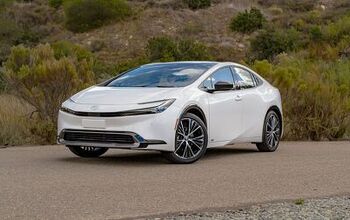
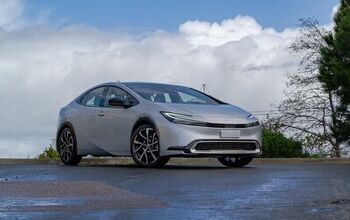




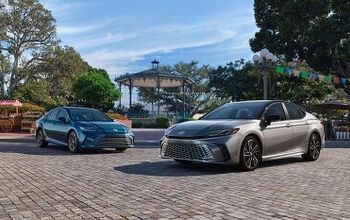



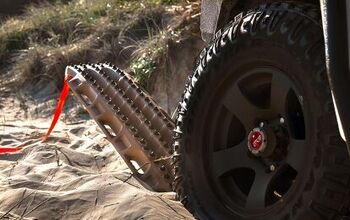
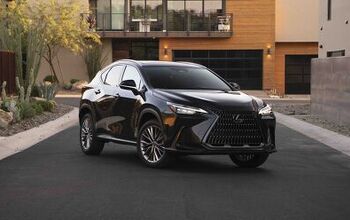

Comments
Join the conversation